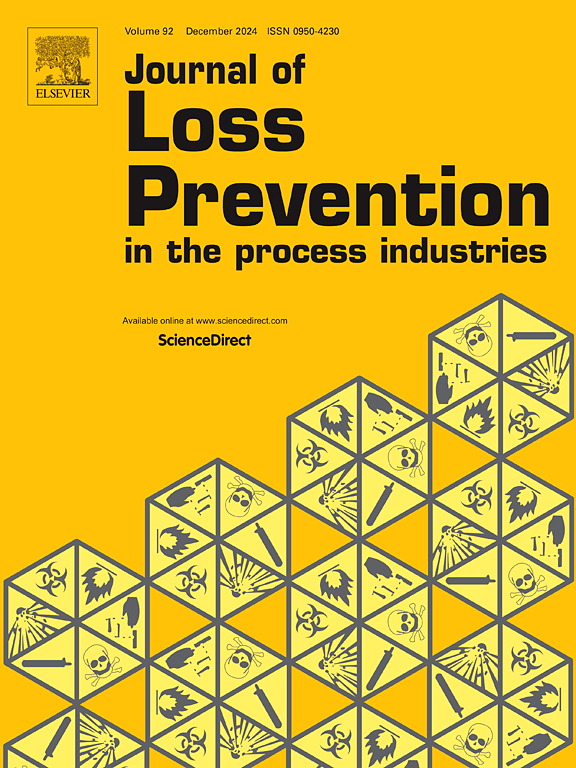Dynamic prediction of multisensor gas concentration in semi-closed spaces: A unified spatiotemporal inter-dependencies approach
IF 3.6
3区 工程技术
Q2 ENGINEERING, CHEMICAL
Journal of Loss Prevention in The Process Industries
Pub Date : 2025-02-04
DOI:10.1016/j.jlp.2025.105569
引用次数: 0
Abstract
Flammable gas leakage in industrial environments poses significant risks to human health and environmental safety. Developing accurate and efficient spatiotemporal models for gas dispersion is essential for mitigating these dangers. The gas diffusion is inherently a spatiotemporal process, yet most research has focused on modeling spatial or temporal correlations separately, failing to capture the dynamic relationships between various variables. To overcome this limitation, we propose a novel approach based on FourierGNN, a multivariate time series forecasting (MTS) method, which treats concentration values from multiple sensors as multivariates and predicts their future trends. By utilizing a fully-connected hypervariate graph structure, the model adaptively learns high-resolution representations across different timestamps and variates simultaneously. Experimental data are generated by simulating a methane leak scenario in a semi-closed gas turbine enclosure using computational fluid dynamics (CFD) software. The method is evaluated on the dataset with three distinct prediction horizons and compared with FC-LSTM and StemGNN. Results indicate that the approach outperforms others in terms of MAPE, MAE and RMSE across different prediction horizons while reducing parameter counts by 61.26% and 82.83%, respectively. Furthermore, the method demonstrates robustness under varying noise levels, confirming its reliability.
半封闭空间中多传感器气体浓度的动态预测:一种统一的时空相互依赖方法
工业环境中可燃性气体泄漏对人类健康和环境安全构成重大威胁。开发准确和有效的气体扩散时空模型对于减轻这些危险至关重要。气体扩散本质上是一个时空过程,但大多数研究都集中在空间或时间相关性的单独建模上,未能捕捉到各个变量之间的动态关系。为了克服这一限制,我们提出了一种基于FourierGNN的新方法,一种多变量时间序列预测(MTS)方法,它将来自多个传感器的浓度值作为多变量并预测其未来趋势。通过利用全连接的超变量图结构,该模型自适应地学习跨不同时间戳的高分辨率表示,并同时变化。利用计算流体动力学(CFD)软件模拟了燃气轮机半封闭机壳中甲烷泄漏的情况,得到了实验数据。在三个不同预测层的数据集上对该方法进行了评估,并与FC-LSTM和StemGNN进行了比较。结果表明,该方法在不同预测范围内的MAPE、MAE和RMSE均优于其他方法,并分别减少了61.26%和82.83%的参数计数。此外,该方法在不同噪声水平下具有鲁棒性,验证了其可靠性。
本文章由计算机程序翻译,如有差异,请以英文原文为准。
求助全文
约1分钟内获得全文
求助全文
来源期刊
CiteScore
7.20
自引率
14.30%
发文量
226
审稿时长
52 days
期刊介绍:
The broad scope of the journal is process safety. Process safety is defined as the prevention and mitigation of process-related injuries and damage arising from process incidents involving fire, explosion and toxic release. Such undesired events occur in the process industries during the use, storage, manufacture, handling, and transportation of highly hazardous chemicals.

 求助内容:
求助内容: 应助结果提醒方式:
应助结果提醒方式:


